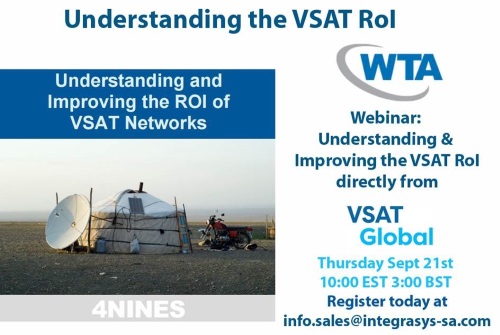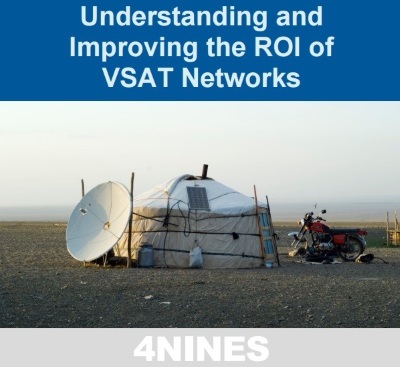Register Now: “Understanding and Improving the ROI of VSAT Networks” Webinar
Thursday, September 21, 10:00 a.m. EST, 3:00 p.m. BST
Very Small Aperture Terminal (VSAT) networks have been providing reliable connectivity around the world and in the most remote locations since the 1980s. The World Teleport Association (WTA) and Integrasys have produced a report, Understanding and Improving the ROI of VSAT Networks, outlining the costly resources involved in deploying and maintaining VSAT networks along with products such as Satmotion Pocket, iDirect’s remote commissioning solution, that help address some of those challenges.
The ultimate goal of the network operator is to provide the highest quality and most efficient service while minimizing costs. According to the survey in the report, for a 50-site VSAT high-performance network, capital expenditure represents 45 percent of the total investment, while operating expenses comprise approximately 55 percent of the cost.
While costs vary depending on the type of network, size, application, and vertical market being served, they can be significantly reduced by simplifying and speeding up the installation process through automation and guidance. Getting a network up and running quickly also results in revenue generation sooner. The more accurate the initial installation is also eliminates the added cost of redeploying trained installers to a remote site as well as any fines for adjacent satellite interference (ASI).
To learn more about improving your ROI for VSAT networks, sign up for the complimentary webinar by emailing Integrasys at info.sales@integrasys-sa.com. This will be a live panel discussion including iDirect’s VP of Business Development, Denis Sutherland. You can also purchase and download the full report from the WTA website.
The Four Nines Project is an ongoing effort by World Teleport Association to promote best practices in teleport business, operations, technology and management. It is named for the technical standard in a satellite or terrestrial transmission of 99.99% availability.

